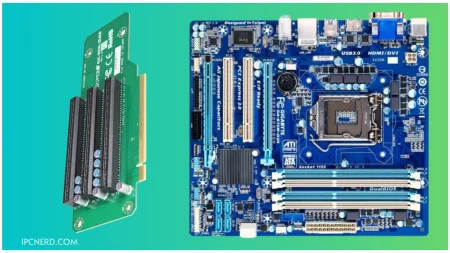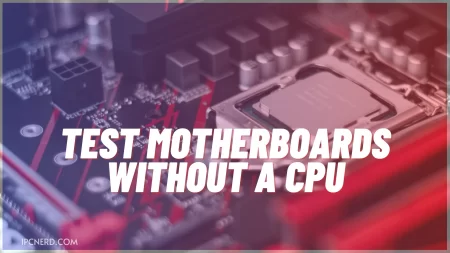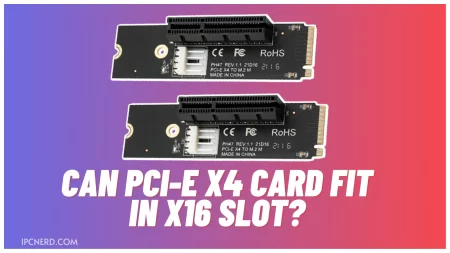It’s time to see how the coolers work, but we need to see how well they can keep our components from overheating. We will put them through their paces with a torture test, which means we need some good hardware.
How to test a PC Case?

To ensure that our PC cases are up to par, we put them through a series of tests. Here’s how we do it:
First, we check the aesthetics of the case. This includes ensuring that the case looks good and that all the panels are properly aligned. We also check to see if any sharp edges could cut you.
Next, we move on to functionality testing. This is where we ensure all the buttons and ports work as they should. We also test to see how easy it is to open and close the case.
Lastly, we stress-test the case through a simulated gaming session. This helps us identify potential cooling issues and ensure that the case can handle the extended use.
Keep these tests in mind if you’re looking to buy a new PC case. By doing so, you can rest assured knowing that you’re getting a quality product.
Types of Testing
Several types of PC case testing can be done to ensure that a case is up to par. These tests range from simple visual inspections to more comprehensive thermal and stress tests.
Visual Inspections: A visual inspection of a PC case can help to identify any obvious defects or damage. This type of inspection is typically done before any other type of testing is conducted.
Thermal Tests: Thermal tests assess how well a PC case dissipates heat. These tests typically involve placing heat-generating components inside the case and measuring the temperature at various points both inside and outside the case.
Stress Tests: Stress tests simulate real-world conditions and assess how well a PC case holds up under duress. These tests often involve putting the case through extended periods of use, vibration, or extreme temperatures.
Other things to look for when testing a PC Case
When testing a PC case, there are a few other things to look for beyond cooling performance. These include:
Build quality: How well put together is the case? Are the panels flush with each other? Are the fit and finish good?
Ease of use: How easy is it to get components in and out of the case? Are the drive bays easy to access? Is cable management easy to do?
Noise level: How much noise does the case generate when everything is up and running?
What does the team do?
The team at PC Case Gear is responsible for testing every PC case that comes through our store. We ensure that each case meets our high standards for quality and performance.
We also test how easy it is to install components, how well the case ventilation works, and how noise-resistant the case is.
We know that choosing the right PC case is important, so we make sure to provide our customers with all the information they need to make an informed decision.
Our team is dedicated to providing the best shopping experience, whether you’re looking for a new PC case or any other computer component.
What are the requirements to test PC cases?
To test PC cases, we need a few things:
- A PC case
- A motherboard
- A power supply
- A CPU
- A CPU cooler
- RAM
- A graphics card (if you want to test gaming performance)
We also need a few things to test the case itself:
- Thermal sensors to measure temperatures inside the case
- Acoustic sensors to measure noise levels coming from the case
- Anemometers to measure airflow inside the case
How do we know if the case is good or bad?
We put every case through a series of tests to determine whether it’s good or bad. We start by looking at the specifications of the case and comparing it to other cases on the market. We then measure the case inside and out to see how well it’s made.
Once we have the measurements, we test the case’s thermal performance by putting a heat source inside and measuring how well the case dissipates heat. We also test the acoustic performance of the case by putting a sound meter inside and measuring how much noise it produces.
Lastly, we subject the case to a series of stress tests, including drop and vibration tests, to ensure it can withstand being jostled around. After completing all these tests, we give the case a final score and write our review.
Frequently Asked Questions
Why do you use different methods to test different cases?
We tailor our testing methods to match the specific characteristics of each case. This allows us to get the most accurate results possible.
How long does it take to test a case?
The time required for testing varies depending on the case’s complexity. Simple cases may only take a few hours to test, while more complex cases can take several days.
How much does it cost to test a case?
The cost of testing varies depending on the complexity of the case and the methods used. Simple cases may only cost a few hundred dollars to test, while more complex cases can cost several thousand dollars.
Conclusion
We hope you’ve enjoyed this article on how we test PC cases. Our rigorous testing ensures that only the best cases make it to market, and we’re always working to improve our methods. If you have any questions or suggestions, feel free to contact us. We’re always happy to hear from our readers.







